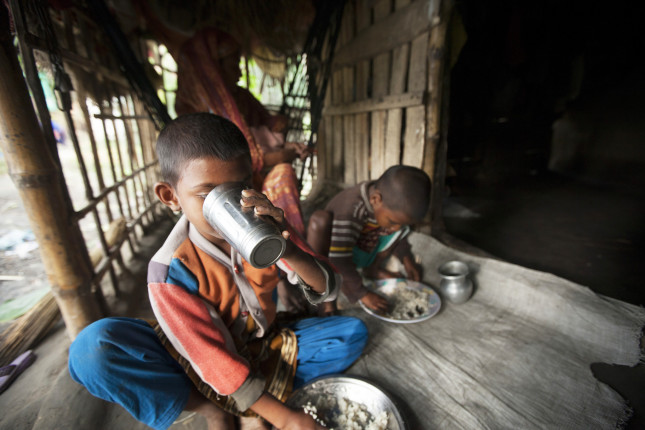-
Lack of Access to Food Tied to Anemia for Women and Girls
October 29, 2018 By Truett Sparkman
This year, “we went from 815 million people food insecure to 821 million—for the third year in a row increasing,” said Ambassador Ertharin Cousin, referencing the latest State of Food Insecurity and Nutrition Report in a recent Smart Women, Smart Power conversation held at the Center for Strategic and International Studies. Ambassador Cousin served as executive director of the World Food Program between 2012 and 2017, and before that, she served as executive vice president and chief operating officer of America’s Second Harvest, now known as Feeding America.
Improving Utilization to Fight Food Insecurity
“We still aren’t addressing the challenges related to utilization enough,” said Ambassador Cousin, referencing the “three-legged stool of food insecurity.” One leg is availability. Can those in need readily have food delivered or receive it? Another leg is accessibility. Can you afford the food that is available? Yet another leg is utilization. Does the person have “the physical ability to digest the micronutrients and the food?” she said.
Of utilization, Cousin said, “in many places because of lack of access to clean water and issues related to sanitation, issues related to household inequities, women eat last in a lot of households.” Where food is available and accessible, women many times don’t have as much access to food as the men or boys in their family, she said. The same problems apply to girls, she said. “And as a result, one of the things that we are seeing is an increase in anemia.”
When Breastfeeding Falls Short
An increased number of breastfeeding women in the developing world is typically seen as progress. But, when you have increased cases of mothers with anemia, Ambassador Cousin said, “are those children receiving the micronutrients they then need from breastfeeding?” According to the World Health Organization, breastfeeding “promotes sensory and cognitive development, and protects the infant against infectious and chronic diseases.” But if a baby’s mother is malnourished and breastfeeding, the milk may not deliver the full protective and developmental benefit.
Role of Climate
The majority of the world’s most vulnerable people also live in regions that will be most negatively impacted by climate change, said Ambassador Cousin. She points to the impact that changing precipitation patterns and other consequences of climate change have on reducing agricultural yield to illustrate the importance of this figure. We know that the answers to addressing the challenges of those who live in these “climate marginal places” are adaptation, mitigation, and resilience building, said Cousin. Yet not enough money has “materialized at the levels that are necessary to address the challenges that are being faced by that population that lives in climate marginal places.”
Listen to the full conversation on the CSIS website: https://www.csis.org/events/food-insecurity-security-challenge
Read more:
- Complex linkages between conflict and food security.
- Women’s power tied to food security during conflict.
- Early warnings do not necessarily trigger timely responses to humanitarian crises.
Sources: BBC News Services, Food and Agriculture Organization of the United Nations, The Journal of Nutrition, United Nations, World Health Organization
Photo Credit: Children eating before going to school in Khulna, Bangladesh. December 2012. Photo by Felix Clay/Duckrabbit.
Topics: development, environment, featured, food security, gender, global health, On the Beat, security
 A Publication of the Stimson Center.
A Publication of the Stimson Center.






